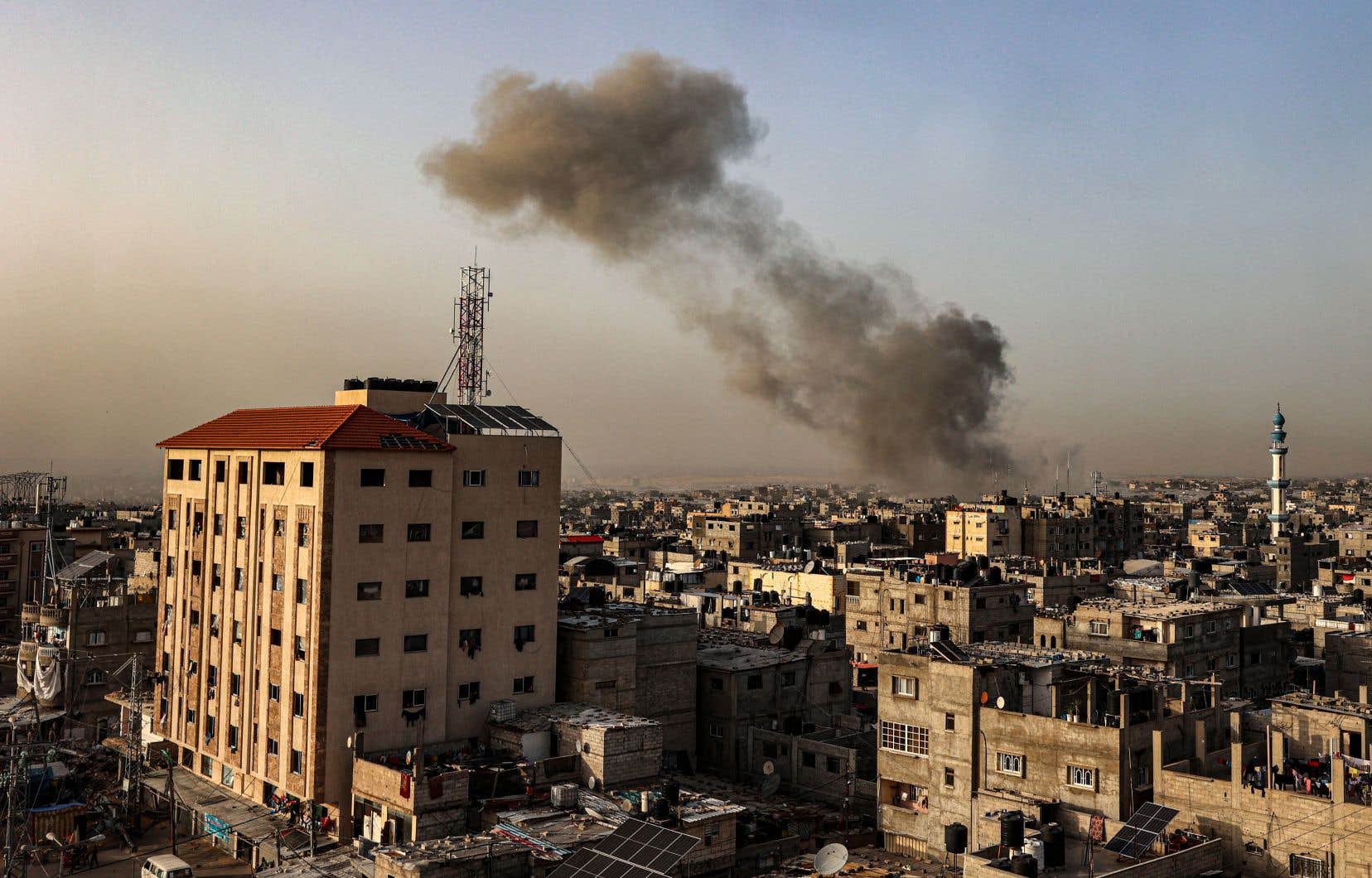On October 7, Hamas launched a major attack on Israeli territory, never before seen in the Middle East. Since then, the Gaza Strip has been plagued by daily bombardments. A large-scale military operation which left tens of thousands of Palestinians dead, and which plunged the territory into an unprecedented humanitarian crisis. Six months later, where are we? Overview in six maps and graphs.
A heavy toll
Six months after the start of the war in Gaza, the Palestinian territory is completely devastated by the Israeli offensive. As of April 5, the Gaza Health Ministry, controlled by Hamas, counted 33,091 people killed since October 7. Almost half are children. The authorities also count at least 75,750 injured.
As a reminder, the Hamas attack on Israel on October 7 left 1,170 dead, according to a count by Agence France-Presse based on data from the Israeli army. More than 250 people were taken hostage that day; about 130 are still held in Gaza, of whom 34 have died, according to the IDF.
Children killed
According to the United Nations (UN), the current war is the deadliest armed conflict between Israel and the Palestinians in at least 18 years, when the agency began collecting data from Gaza and the West Bank.
Furthermore, around 40% of the victims of Israeli bombs are children. The UN said last month that the number of children killed in Gaza in five months reached the number of children killed in armed conflicts around the world in four years, between 2019 and 2022. The most recent data shows that this number is now largely exceeded.
A scarred territory
At least 56.6% of buildings in Gaza were damaged by the Israeli offensive as of April 2, according to data obtained through analysis of satellite images – produced by Corey Scher, a doctoral candidate at the University of New York City, and Jamon Van Den Hoek, associate professor of geography at Oregon State University.
The most destruction is seen in Gaza City. The city saw 74.3% of its infrastructure damaged. The rest of the north of the enclave also suffered damage to 70% of its structures. Rafah, located on the border with Egypt, remains the governorate least affected by bombs. However, we note that 33% of its urban infrastructure suffered damage.
A similar satellite analysis of Gaza’s agricultural resources, produced by He Yin, an assistant professor at Kent State University, also shows that nearly 23 percent of greenhouses were completely destroyed by the Israeli offensive, and 42 percent were damaged. Regarding agricultural land, between 44% and 52% were affected by the war. Once again, Gaza City is the one where the most damage is recorded (between 58% and 80%).
Help is hard to get
Beyond the deaths, the destruction and the threat of raids, the difficult access to water, food, electricity and even medical care also makes the Palestinian enclave a territory hostile to survival under Israeli siege.
Northern Gaza, in particular, is extremely vulnerable to famine, which could occur by May in the absence of “urgent measures”, the United Nations has warned. Still according to the agency, at least 50,400 children under the age of five are severely malnourished.
The latest update from the UN Office for the Coordination of Humanitarian Affairs, published in February, details that at least US$600 million in additional aid is needed to meet the minimum humanitarian needs in Gaza.
1er April, the death by an airstrike of seven employees of the World Central Kitchen (WCK) organization distributing food aid in Deir-el-Balah caused turmoil around the world. However, the NGO claims to have confirmed in advance to the armed forces the movements of the convoy in the territory. The Israeli army admitted to making “serious mistakes” following the incident, which forced WCK to cease its operations in Gaza.
However, this is not the first time that aid workers have lost their lives since October 7. According to the United Nations, nearly 200 aid workers have already been killed. The majority are UNRWA employees. Doctors Without Borders and the Palestinian Red Crescent also reported losing members to Israeli strikes.
On Friday, the Israeli security cabinet authorized the “temporary” opening of the Erez border crossing, in the north, in order to deliver humanitarian aid to this area very weakened by the conflict. The authorities also confirmed “the increase in aid through Kerem Shalom”, another crossing to the south. However, these measures are “scattered” and insufficient in the face of critical needs on the ground, according to UN Secretary General António Guterres.
